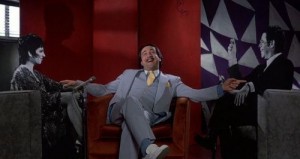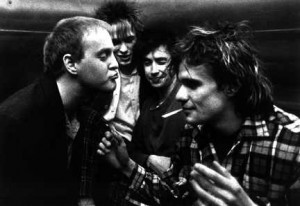I finally saw the movie Scott Pilgrim vs. the World last night. It was so good, so sweet, so true to a time in life that I’d bet—cultural and technological changes aside—a lot of Townspeople can identify. The whole family dug it, and my wife and I took great, snobbish pleasure in explaining to our boys why the film couldn’t have been the massive popular hit and Academy Award winner it clearly would have been had more of the world been more like us.
This morning I’m thinking about some of the key cultural developments since my teen years (that would be the mid-1970s into early 1980s, kidz) that have worked their way into the modern-day rock ‘n roll youth culture. For instance, the history of rock ‘n roll through my teen years was framed by the ubiquitous landscape of cars & girls. There was a good chance that a rock ‘n roll artist in the early days of the genre, such as Chuck Berry, through bands like Loverboy was going to sing about “cars and girls.” Drugs and alcohol would join the mix, but cars and girls were long the driving force, no? I wish I could explain it better; would it make sense if I said cars and girls were key to the mise-en-scéne of rock ‘n roll? (My apologies to film buffs and the French, if I’m using this term incorrectly.)
If it wasn’t clear enough to me, thanks to my Swing Era–loving, “gamer” teenage son whose love of The Mills Brothers, Dean Martin, et al has been furthered by the soundtrack to his favorite video game, the Fallout series, Scott Pilgrim vs the World drove home the point that video games have replaced cars in the rock ‘n roll mise-en-scéne. For that matter skateboards have eclipsed cars. What fun would there be writing about a Toyota Camry?
Girls are still essential to the landscape of rock ‘n roll, but boys are included too, and not just in “Girl Group” songs written by highly frustrated, compensating, domineering dudes.
Video games, skateboards, boys… What else might be new to the rock ‘n roll landscape since you moved beyond its core demographic?




